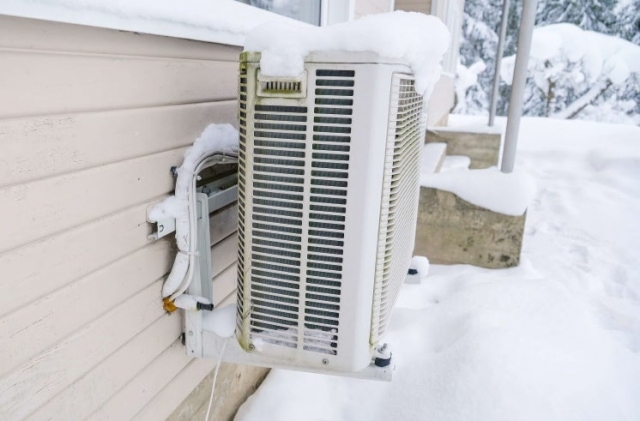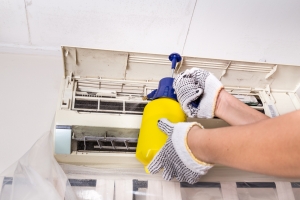The Intensity of Norwegian Winters
Norway is known for its stunning natural beauty, dramatic fjords, and breathtaking northern lights, but there is one aspect of life in this Nordic country that often surprises newcomers: the intensity of its cold. Winters in Norway are not just chilly, they can be downright brutal. In some regions, temperatures can plunge well below -30 degrees Celsius, making it essential for everyone to find a reliable way to heat their homes. As the winters seem to get longer and harsher, Norwegians have developed a keen interest in comparing different types of heaters known locally as varmeovner to ensure that they are getting the best possible quality and performance. This trend has grown rapidly, as people realize the importance of having a top-notch heating solution during the darkest, coldest months of the year.
When you think of Norway, you might picture cozy wooden cabins surrounded by snow-covered landscapes, or cities blanketed in fresh powder. What you might not realize is that these idyllic scenes are often accompanied by extremely low temperatures, made more challenging by strong winds and heavy snowfall. In northern parts of the country, the mercury can drop significantly below zero, reaching depths that visitors from milder climates can hardly imagine. Even coastal areas, moderated somewhat by the Gulf Stream, are not exempt from bone-chilling cold that requires a high-quality heating system to keep homes comfortable.
A Diverse Market of Heating Solutions
As a result of these conditions, the market for heaters in Norway is incredibly diverse. Gone are the days when a single type of electric heater would be sufficient. Today's consumers have a broad range of options, from traditional electric convection heaters to advanced heat pumps, radiant floor heating systems, wood-burning stoves, and even modern, high-tech models that can be controlled through smartphone apps. Each type of heater comes with its own set of advantages and challenges, encouraging consumers to research thoroughly before making a purchase decision. The search for the perfect heater has sparked numerous online forums, buyer's guides, and product reviews, creating a culture of comparison that is all about helping people find the best solution for their homes.
The Need to Compare and Contrast
A major reason for this interest in comparing different heaters is the sheer scale of temperature variation. In some mountainous regions, the thermometer can register temperatures around -30 degrees Celsius during the coldest months. At such extremes, a mediocre heater might leave certain rooms cold or cause the electricity bill to skyrocket. A heater that is too weak or inefficient can fail to maintain a comfortable indoor climate, which might not just be uncomfortable, but potentially harmful for the elderly, children, or those with health conditions. Hence, selecting the right heater is about more than just comfort; it's also a matter of health and safety.
One of the factors that buyers pay close attention to is the energy efficiency of their chosen heating device. Given the long winters, heating costs can take up a large portion of a household's budget. Norwegians, known for their emphasis on sustainability and environmental responsibility, look for heaters that minimize energy consumption while still providing ample warmth. A well-designed heat pump, for instance, can deliver significant savings over time, even if the initial investment is higher. Users compare different models, reading up on specifications, energy ratings, and average electricity usage to figure out which heater will save them the most money in the long run.
Considering Usability and Maintenance
In addition to efficiency, noise level and ease of use are also key considerations. Some heaters emit a constant hum that can be annoying, especially in small living spaces. Others might require regular maintenance or come with a learning curve to operate effectively. Busy families, or anyone who values simplicity, look for heaters that are user-friendly, quiet, and require minimal upkeep. These are all factors that lead people to spend time researching, reading customer feedback, and comparing heater models online before making a decision.
Smart Heaters and the Importance of Broadband
Norway's technological landscape has also played a role in heating trends. Some advanced heaters now connect to the internet via Wi-Fi, allowing users to control them remotely through dedicated mobile apps or smart home systems. This can be incredibly convenient, especially for those who travel frequently or who want to ensure their home is cozy the moment they walk through the door. However, a strong and stable internet connection becomes crucial for these smart heaters to function properly.
This is where another comparison comes into play: comparing broadband providers. In Norwegian, broadband providers are called bredbåndsleverandører. People look to these companies to ensure that their internet connection is reliable and fast, so they can seamlessly control their Wi-Fi-enabled heaters, monitor energy use, and even set schedules or adjust temperatures from afar. A home's internet connection, it turns out, can be just as important as the heater itself, especially when dealing with cutting-edge heating technology.
Resources for Choosing the Right Heater
In fact, the popularity of heater comparisons has inspired the growth of niche blogs, YouTube channels, and social media pages dedicated to testing and reviewing different varmeovn test solutions. These outlets often share detailed performance tests, videos of installation processes, and comparisons of running costs. They may interview experts, talk to installers, or consult homeowners who have used a particular model for multiple winters. This wealth of information empowers consumers to make informed choices, ensuring that they invest in a heater that will serve them well in Norway's unforgiving climate.
Tailoring Heating Solutions to Your Home
Another factor that influences heater choice is the size and age of the home. Older homes might have poorer insulation, necessitating a more powerful heater. Modern, energy-efficient houses, on the other hand, might benefit most from subtle underfloor heating systems or smaller, strategically placed heaters. Apartments in the city may require a completely different approach compared to remote cabins in the mountains. These considerations mean that one person's ideal heater might be entirely unsuitable for another, making careful comparisons all the more important.
Cultural Preference for Coziness
Additionally, the cultural preference for coziness known in neighboring Denmark as “hygge” plays a role in heater selection. Norwegians often spend a great deal of time indoors during the winter, savoring hot drinks, reading books, and enjoying the warmth of their homes. A high-quality heater can create that snug environment everyone craves when the wind howls outside and the snow piles up at the window. The right heater can turn a house into a haven, allowing families to enjoy the beauty of winter without feeling its sting.
Professional Installation and Maintenance
It's also worth noting that as more Norwegians invest in advanced heating solutions, the importance of professional installation and maintenance services grows. Some heaters require proper positioning, careful calibration, and occasional servicing to operate at peak efficiency. People turn to professional electricians, plumbers, and heating experts not only to install their chosen system but also to ensure it runs smoothly over the long term. Having easy access to these services is another reason why comparing different heater brands, models, and technologies has become such a widespread activity.
Turning Harsh Winters into Comfortable Havens
In the end, Norway's biting cold drives people to seek the best possible heating solutions. The combination of extreme temperatures, long winters, and the desire for cozy indoor spaces has led to a culture of comparison when it comes to heaters. Norwegians are no strangers to research and critical thinking, and they bring those qualities to their search for the perfect heater. Online resources, professional reviews, and word-of-mouth recommendations from friends and neighbors all contribute to a rich body of knowledge that helps consumers find heaters that match their budgets, their homes, and their comfort preferences.
Whether it's a traditional wood-burning stove, a sleek modern heat pump, an electric panel heater, or a Wi-Fi-enabled device that allows remote control and monitoring, the options are more plentiful than ever. With this variety comes the responsibility and opportunity to choose wisely. By carefully comparing different makes and models, understanding energy efficiency ratings, and even ensuring a stable internet connection through trusted broadband providers for the smart heaters of the future, Norwegians are well-equipped to face the most challenging of winters. After all, in a country where temperatures can dip far below what most people find comfortable, having the best heater isn't just a luxury—it's a necessity that can turn a harsh, freezing season into something warm and welcoming.






